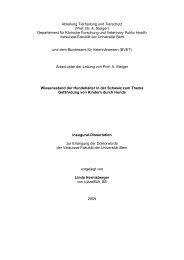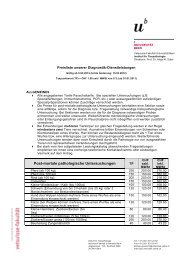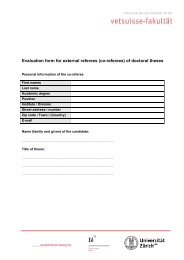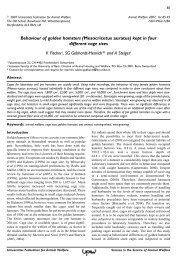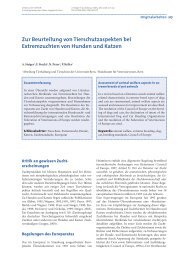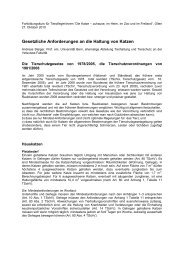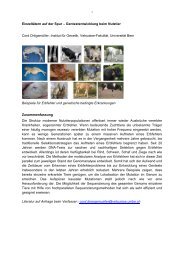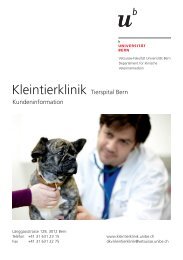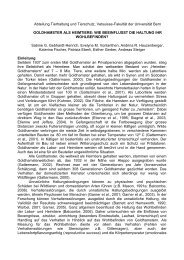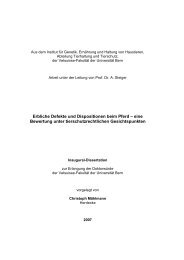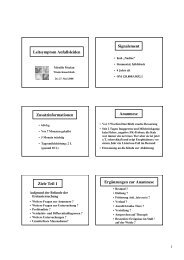Behaviour of golden hamsters (Mesocricetus auratus) - Vetsuisse ...
Behaviour of golden hamsters (Mesocricetus auratus) - Vetsuisse ...
Behaviour of golden hamsters (Mesocricetus auratus) - Vetsuisse ...
Create successful ePaper yourself
Turn your PDF publications into a flip-book with our unique Google optimized e-Paper software.
<strong>Behaviour</strong>A total <strong>of</strong> thirty minutes <strong>of</strong> the taped behaviour was analysed using the ObserverVersion 5.0 (Noldus). The thirty minutes <strong>of</strong> observation were split into six five-minutesequences during which the hamster stayed outside the house, i.e. the hamster wasnot sleeping and was visible. If possible, the sequences were spaced equally overthe three recorded hours. If a hamster was not active or visible during the whole 3recorded hours, so that observation sequences could not be spaced equally, a total<strong>of</strong> thirty minutes <strong>of</strong> the time the <strong>hamsters</strong> were visible on the tape was analysed. Insome cases (4%, 7 <strong>hamsters</strong>, each with 1 observation) <strong>hamsters</strong> were active for lessthan 30 minutes, thus their observational data was based on the time they wereactive. One <strong>of</strong> the <strong>hamsters</strong> in cage size 2 was never active during the recorded time,so behavioural data for this animal are missing. The behavioural data wereexpressed as the percentage <strong>of</strong> total observed time for all three observations (totalpercent duration). For each observation separately a repeated measure analysis wasmade. Mean duration (sec.) and frequency (bouts) were analysed, when the percentduration suggested interesting results. <strong>Behaviour</strong>s and locations were classified asdescribed in App. IV, following Vonlanthen (2003).StatisticsAll statistical analyses were made with NCSS 2001, or SAS. Data and residuals werechecked for normality and transformed if necessary and possible. Transformationsand tests are described in the results. The series and the occurrence <strong>of</strong>hydrocephalus were included as factors in the analyses <strong>of</strong> behavioural data and arementioned if they were significant. Correlations were calculated by using Spearmanrank correlations coefficients.11



